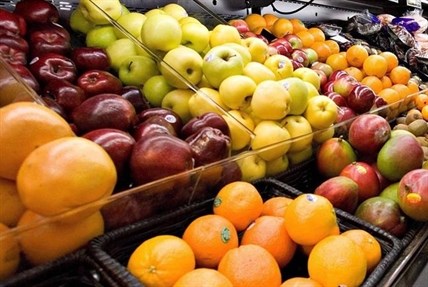
Image Credit: THE CANADIAN PRESS/Jacques Boissinot
April 06, 2014 - 10:43 AM
TORONTO -- The grocery price wars that have pushed a kilogram of bananas below the price of a chocolate bar may be good news for consumers' wallets, but those who watch the industry see a race to the bottom that may leave shoppers with less selection and dwindling customer service.
Grocery wars are not new in North America, but they got a boost this past year as U.S. giant Target entered the Canadian market, forcing Walmart to up its game in the grocery department, and spurring a new wave of consolidation involving heavyweights such as Loblaw and Sobeys.
Kyle Murray, director of the school of retailing at the University of Alberta, said that while all the competition is likely to lower prices in the short term, "it also forces the companies to do things they may not otherwise do."
"In order to get those lower prices you're going to see an increase in things that improve efficiency, but they may not improve the quality of the product or even the shopping experience," he said.
That could mean the disappearance of an in-store bakery, or butcher, because it's cheaper to package those products centrally and then ship them to the stores.
It may also result in retailers cutting costs by moving from local to global supply chains, which may not always take the most sustainable or environmentally-friendly approaches to delivering products.
"You can have issues around the quality of products and the way products are manufactured; the type of ingredients that go into some of the consumer packaged goods," said Murray.
"In order to get prices low you have to do things in some cases, like replace cane sugar with corn syrup. Some of those things that may not be as obvious right away are also the result of pushing prices lower. There is some breaking point. You can't just continue to lower your prices, you do have to start to change the product a little as well."
In March, Loblaw's (TSX:L) $12.4 billion purchase of Shoppers Drug Mart Corp. was approved, leaving the combined company with roughly 2,300 corporate, franchised and associate-owned stores across Canada, and nearly 1,800 pharmacies to introduce their grocery product lines.
Last year, Sobeys bought Safeway Canada in a $5.8 billion deal and promptly angered suppliers by demanding retroactive price breaks.
The sheer size of the new giants weakened the negotiating position of suppliers, many who sought to recoup their losses by reducing spending on the research and development of innovative food products.
But it's those new products that many smaller, independent grocery retailers rely on to set their stores apart, drawing in customers that are looking at more than price points.
"Manufacturers aren't investing in new innovation that they're bringing to the Canadian marketplace because they can't get a return, so ultimately what happens to our guys is that they start looking like everybody else and so they lose their point of difference," said Tom Barlow, president of the Canadian Federation of Independent Grocers.
Barlow says the smaller operators are an important piece of the grocery puzzle not only because they offer selection and better customer service, but also because the competition helps keep prices lower for consumers across all retailers.
"Ultimately, we really believe that prices will go up if there's not competition in the marketplace to keep it in place," Barlow said.
Several grocery stores and large supplier groups have since asked the federal government to impose a new code of conduct to protect suppliers from being squeezed by price cut demands from the country's big grocers. But Metro was among the retail chains that rejected those calls, saying intervention isn't required because its terms with its suppliers are fair and "very competitive."
David Sparling, a professor with Western University's Ivey Business School, said some retailers and manufacturers are responding by updating their food processing plants and adding more technology, while the smaller players, who don't have their own distribution centres, are looking to distinguish themselves by offering products that are fresh, local, organic, or just plain interesting.
Other suppliers have chosen to go directly to consumers, setting up specialty stores where they charge higher prices or sell online.
In the U.S., the competition has opened up space in the market for companies like Whole Foods, which has a higher price point but offers all organic and natural products.
"Ultimately, what consumers choose will drive what retailers offer," said Murray.
"The big question is... are we going to choose overall lower price and somewhat lower quality, or are there going to be really distinct segments? There are a lot of other people that care about things (other than price). So grocers are going to have to find which of those segments they can serve best."
News from © The Canadian Press, 2014